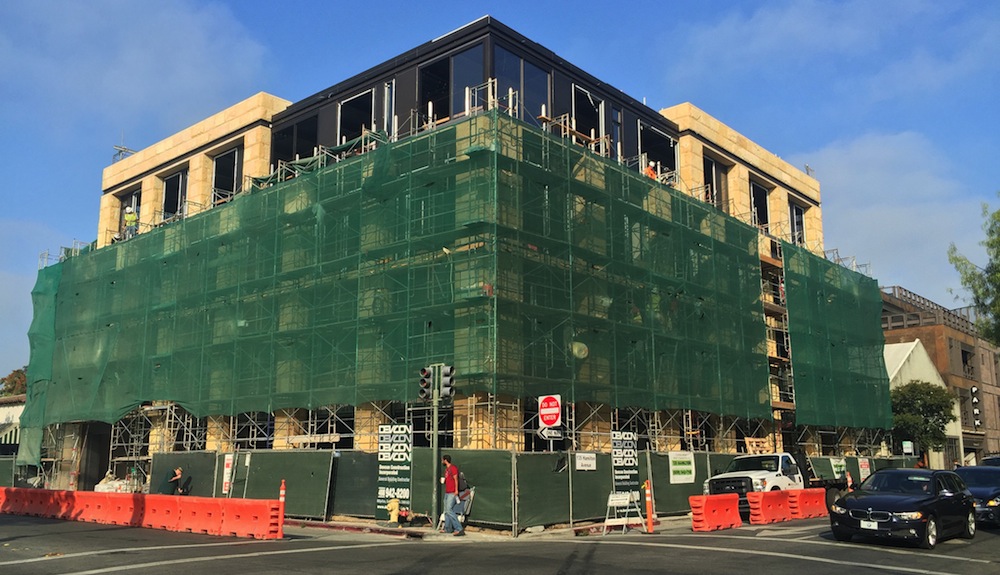Real gross domestic product (GDP) expanded by just 0.7% (seasonally adjusted annual rate) during the fourth quarter of 2015, according to an analysis of Bureau of Economic Analysis data released by Associated Builders and Contractors (ABC). This paltry growth follows a 2% increase during the year's third quarter and a 3.9% increase during the second quarter. For the year, GDP expanded by 2.4%, matching the rate of growth seen in 2014.
Nonresidential fixed investment shrank by 1.8% in the fourth quarter, the first time the segment has contracted since the third quarter of 2012. For the year, nonresidential fixed investment expanded by 2.9% after growing by 6.2% in 2014 and 3% in 2013.
"The economy did not end the year well," ABC Chief Economist Anirban Basu said. "Today's GDP data adds weight to the argument that the U.S. is in a corporate profits recession, an industrial recession, and was experiencing a softening of investments. With the exception of the residential building sector, business capital outlays have declined as corporations deal with a combination of sagging exports, competitive imports, declining energy related investments, rising wage pressures and healthcare costs.
"Recent turbulence in financial markets suggest that capital availability may continue to soften," Basu said. "While residential construction is likely to continue to recover given the combination of low interest rates and accelerating household formation, nonresidential construction spending growth may begin to sputter a bit as those who deploy capital become more defensive. This is not to suggest that nonresidential construction spending is set to decline. Many contractors continue to report significant and growing backlog. However, the current situation suggests that the growth in backlog and ultimately in spending may not be quite as rapid as it was earlier in 2015."
Six key input prices rose or remained unchanged in October on a monthly basis, while one remained unchanged:
- Personal consumption expenditures expanded 2.2% in the fourth quarter after growing by 3% in the third quarter.
- Spending on goods grew 2.4% in the fourth quarter after expanding 5% in the third quarter and 5.5% in the second quarter.
- Real final sales of domestically produced output increased 1.2% for the fourth quarter after a 2.7% increase in the third quarter.
- Federal government spending increased 2.7% in the fourth quarter, the segment's largest increase since the third quarter of 2014.
- Nondefense spending increased 1.4% in the fourth quarter after expanding 2.8% in the previous quarter.
- National defense spending expanded by 3.6% in the fourth quarter after contracting by 1.4% during the third.
- State and local government spending contracted by 0.6% in the fourth quarter after increasing by 2.8% in the third quarter.
Related Stories
| Aug 11, 2010
Skanska Promotes Richard Kennedy to COO for NY/NJ Metro Area
Skanska USA Building Inc., headquartered in Parsippany, N.J., has announced that Richard Kennedy was promoted to Chief Operating Officer from his previous role as Senior Vice President – General Counsel. Kennedy’s promotion marks the latest addition to Skanska’s national leadership team.
| Aug 11, 2010
The New Yorker's David Owen: Why Manhattan is America's greenest community
David Owen is a staff writer at The New Yorker and the author of 14 books, most recently Green Metropolis: Why Living Smaller, Living Closer, and Driving Less Are the Keys to Sustainability, in which he argues that Manhattan is the greenest community in America. He graduated from Harvard and lives in Washington, Conn., where he chairs the town planning commission.
| Aug 11, 2010
Sustainable Buildings as Teaching Tools: 4 Strategies for Integrating Buildings into Experiential Learning
4 Strategies for Integrating Buildings into Experiential Learning
| Aug 11, 2010
Morphosis builds 'floating' house for Brad Pitt's Make It Right New Orleans foundation
Morphosis Architects, under the direction of renowned architect and UCLA professor Thom Mayne, has completed the first floating house permitted in the U.S. for Brad Pitt’s Make It Right Foundation in New Orleans.The FLOAT House is a new model for flood-safe, affordable, and sustainable housing that is designed to float securely with rising water levels.
| Aug 11, 2010
McHugh completes ultra-lux Capella Telluride hotel in Colorado
James McHugh Construction Co. has completed the new Capella Telluride hotel and condominium resort in Telluride, Colo., the first U.S. property for the new ultra-luxury Capella Hotels brand. Positioned to compete with the elite levels of luxury brands, the Capella Telluride features complex stone, stucco and wood exterior, heavy timber construction, and an abundance of high-level finishes and amenities.
| Aug 11, 2010
Bovis Lend Lease, Webcor among nation's largest multifamily contractors, according to BD+C's Giants 300 report
A ranking of the Top 50 Multifamily Contractors based on Building Design+Construction's 2009 Giants 300 survey. For more Giants 300 rankings, visit http://www.BDCnetwork.com/Giants
| Aug 11, 2010
Turner edges out Perkins+Will for the top spot on BD+C's Top 200 Building Team LEED APs ranking
With 1,006 LEED Accredited Professionals on staff, Turner Construction took the top spot on Building Design+Construction’s 2009 ranking of AEC firms with the most LEED APs, published as part of the Giants 300 report. Turner added more than 580 LEED APs during the past year to surpass Perkins+Will, which held the top spot four years running.







